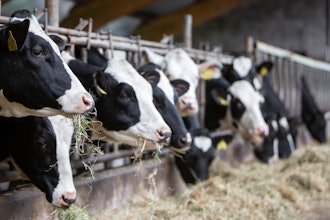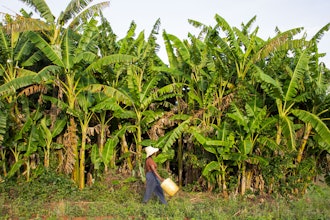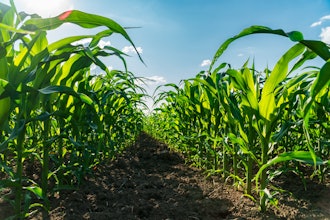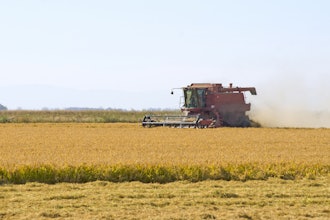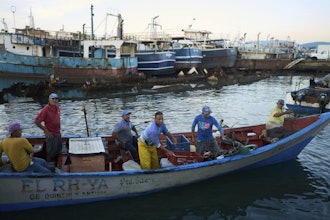
Alliance researchers and partners, including Embrapa, Brazil’s largest agricultural research organization, launched a rapid response plan to slow the spread and mitigate potentially devastating consequences for food security and livelihoods.
In 2023, cassava farmers in remote French Guiana watched in shock as their crops withered. They pulled dilapidated stems from the ground. Instead of unearthing massive root bunches, which are cornerstones of diets across South America, they found nothing larger than carrots. Researchers identified the problem as cassava witches’ broom disease, provoked by a little-understood fungus, after analyzing results from a 2024 expedition to French Guiana. It was the first report of the disease in the Americas.
Around the same time, cassava witches’ broom disease was also observed in neighboring Brazil. In 2025, the first two confirmed reports in Latin America’s largest country, in March and May, were at least 1,000 km apart.
Scientists at the Alliance of Bioversity International and CIAT (The Alliance) and the Brazilian Agricultural Research Organization (Embrapa) launched a rapid-response plan in June 2025 to mitigate the spread of disease to formalize collaboration efforts that began early in the year. The immediate concern is to slow or contain the spread of witches’ broom and avoid a continental food-security disaster.
“We are facing an emergency,” said Paulo Melo, a researcher at Embrapa’s International Relations Office, during a strategizing meeting at the Alliance’s Americas headquarters in Colombia.
“Cassava is an everyday food in Brazil. If producers, particularly many women and Indigenous communities, don’t have cassava roots, they won’t have anything to eat or anything to make money from.”
Northeastern Brazil is one of the world’s largest consumers of cassava. Brazil, by far, is Latin America’s largest cassava producer. CWBD, as cassava witches’ broom disease is known for its English initials, has plant infection rates as high as 90% in Southeast Asia, where the Alliance first identified the fungal pathogen as the cause of the disease in 2023. Early reports point to staggeringly high cassava mortality in Brazil and French Guiana.
Cassava is a critical source of calories, carbohydrates, vitamins and micronutrients. Easy to grow under even the harshest conditions, its roots and the flour developed from them play an outsized role in diets. Cassava is central to the food security of about 800 million people globally, particularly smallholder farmers. Many African countries consume more cassava per capita than even Brazil. So far, CWBD has not been reported in Africa.
CWBD’s spread in Brazil is additionally concerning because the Amazon is cassava’s center of origin, meaning it was first domesticated there and is home to the plant’s greatest natural biodiversity, including at least 98 wild relatives. Because the disease is new to South America, scientists believe there is little natural resistance to it.
While a separate line of research is needed, CWBD likely jumped from a yet unknown host in Southeast Asia to cacao, avocado and cassava, raising the concern that it could jump back from cassava to cacao in South America, which is also cacao’s center of origin. Alliance researchers expect to understand cacao’s susceptibility to the fungus that causes witches’ broom, Ceratobasidium theobromae.
Science for prevention
With CWBD flying across South America, the race is on to understand the extent of the threat. The Alliance-Embrapa collaboration has several immediate actions aimed at containing witches’ broom. Ultimately, researchers hope to find a way to treat CWBD, or understand the natural resistance that some cassava varieties have to the pathogen and transfer those characteristics into new breeding lines.
There is currently no treatment for CWBD. The only way to eradicate it is by collecting all infected plants in an area and burning them. But because some infected plant stems remain viable for planting – ones that don’t show outward signs of infection – transmission is believed to be strongly linked to trade in cassava stakes, which are the primary material for cassava propagation.
“Embrapa’s main concern now is stopping witches’ broom so it does not put the lives and livelihoods of millions of people at risk,” said Jane Simoni, at Embrapa’s International Relations Office.
“This work is about South-South collaboration and fighting hunger and poverty. This problem is aimed directly at the most vulnerable people in very poor regions of Latin America.”
Immediate priorities are to map the distribution and severity of CWBD in northeastern Brazil. For this, scientists will need to implement a standardized set of molecular tools first developed for Southeast Asia, that can be used for in-field detection of C. theobromae. Alliance researchers aim to deploy this technology in the region and provide Embrapa’s large network of experts with detection tools.
Scientists also want to map cassava diversity and urgently collect wild cassava relatives and cassava landraces – the varieties farmers have selected and cultivated over generations. But the key is for researchers to get to the plants before they are infected.
Brazil maintains large collections of both cassava varieties and wild relatives. But Embrapa’s Melo said new collection expeditions should be launched soon. Part of the Alliance-Embrapa collaboration would include bringing new material to the Alliance’s gene bank in Colombia, Future Seeds, which has almost 6,000 cassava accessions (plant samples) from 28 countries, including 1,557 from Brazil.
The accessions must be kept alive and replicated in vitro, a delicate task. Plant samples must be quickly transported to suitable facilities to ensure they stay alive.
Future Seeds researchers distribute several new varieties of cassava every year but breeding new varieties is time-consuming. Past analyses by the Alliance identified sources of resistance to brown streak disease in cassava, a major threat in Africa. Brown streak disease research is part of ongoing Alliance research.
“It’s hard to understate the importance of the cassava germplasm collections,” said Jonathan Newby, the leader of the Alliance’s cassava research team.
“These form the genetic backbone for breeding new varieties and finding and understanding natural resistance to disease. It’s critical that material facing threats from witches’ broom is collected, screened for disease, and quickly transported to in vitro storage facilities for research.”
Out of about 300 cassava varieties they tested, the Alliance’s cassava breeders have found multiple varieties that display resistance to witches’ broom in Southeast Asia. Cassava in Future Seeds and other gene banks may also prove to have some level of resistance. While the pathogen is new to South America, it is unlikely that many plants have natural resistance, but scientists hope some natural resistance exists.
“This all takes time and resources,” said Embrapa’s Simoni. “You can’t do an experiment this week and have the results next week. That’s not how it works. We’re working to quickly bring together as many international experts as possible to confront this challenge together. We also need to ensure Africa is prepared, as the impact of witches’ broom there could be profound. We have to act now. This is science for prevention.”
The witches’ broom work builds on decades of collaboration between the Alliance and Embrapa, which recently entered a new phase focused on further strengthening ties between the organizations.
“The Alliance and Embrapa expect to make significant contributions not only to witches’ broom response and research but on other mutual interests, including food security, climate action and food system transformation,” said Maya Rajasekharan, the Alliance’s Managing Director for the Americas.
A fastidious fungus
Alliance scientists and partners are at the forefront of CWBD’s troubling rise in recent years. In addition to identifying C. theobromae as the cause of witches’ broom in Southeast Asia (which was previously thought to be a bacterial or viral infection), researchers also grew the fungus in laboratory conditions, a first-time feat that took researchers two months. This allows researchers to better understand how the fungus functions, test it under controlled conditions on cassava plants, potentially devise treatment methods, and breed CWBD-resistant varieties.
“It’s from a family called ‘fastidious fungi’ and it lives up to its name,” said Wilmer Cuellar, who leads the Alliance’s Crop Protection Team.
“It’s hard to identify, very difficult to isolate, and scientists needed decades to associate it with witches’ broom.”
Once Cuellar’s lab sequenced C. theobromae, they discovered it had been infecting cassava in Southeast Asia since at least the 2000s, and cacao since the 1960s. The incidence of witches’ broom disease appears cyclical and often flares up after long rainy seasons. The region is currently facing another major outbreak that started in 2022 in at least a half-dozen countries that produce cassava for starch, a multibillion-dollar business critical to smallholder farmers there.
Cuellar is concerned C. theobromae may behave differently in the Amazon. Humid conditions are far more constant there than in Southeast Asia, potentially creating an environment where the fungus could thrive and quickly spread. While predicting where CWBD will arrive next, it could potentially continue its path through South America’s northern Atlantic countries, including Colombia, which has its largest growing areas in the country’s north.
“The terrain is totally different in South America and the fungus will likely fly,” Cuellar said. “We’re already seeing it spread rapidly with more severe symptoms. This is a big problem.”













